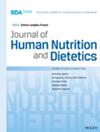摘要
背景和目的 测量肌肉质量、力量和功能在营养评估中至关重要,可为整体健康提供宝贵的信息,包括营养充足性、代谢功能和身体健康。然而,在营养学实践中,使用这些指标进行营养评估和监测的做法并不广泛,在护理方面仍存在差距。本研究旨在探讨爱尔兰营养师目前与肌肉健康相关的营养评估实践。 方法 在 2023 年 9 月 21 日至 2023 年 10 月 26 日期间,通过电子邮件和社交媒体中的链接,向爱尔兰国家注册营养师(N = 1340)发放了一份包含 29 个项目的横断面描述性在线调查。对数据进行了描述性分析。 结果 大多数营养师(84/85)都认为肌肉在营养状况评估中很重要,80%(n = 56/70)的营养师表示在临床实践中至少进行过一次肌肉健康评估。手握力(HGS)被认为是最重要(95.7%;n = 67/70)、最常用(64.3%;n = 45/70)和最有用的肌肉健康监测指标(77.1%;n = 54/70)。无论如何,在常规实践中进行肌肉健康评估的频率很低。常规(> 每周一次)测量的肌肉健康评估包括体重(82.9%;n = 58/70)、体重指数(81.4%;n = 57/70)、HGS(25.7%;n = 18/70)和定时起立测试、椅子站立测试或短期体能表现电池(10%;n = 7/70)。肌肉健康评估的主要障碍是 "缺乏培训/应用经验"(61.4%,n = 43/70)和 "缺乏设备可用性"(58.5%,n = 41/70)。 结论 本研究深入探讨了爱尔兰营养师在营养评估中应用肌肉健康评估的情况。结果表明,肌肉健康的公认价值与其在营养评估中的应用之间存在差距。尽管人们几乎一致同意肌肉的重要性,但培训不足和缺乏设备等挑战阻碍了肌肉健康评估作为营养评估标准组成部分的广泛实施。这些发现强调了进一步开展实践教育和采取措施改善设备供应的必要性,以弥补这一差距并优化营养护理。Background and Aims
Measuring muscle mass, strength, and function is vital in nutritional assessment, offering valuable insights into overall health, including nutritional adequacy, metabolic function and physical well-being. Nonetheless, the use of these measures for nutritional assessment and monitoring in dietetic practice is not widely implemented, and gaps in care remain. This study aimed to explore Irish dietitians' current nutritional assessment practices related to muscle health.
Methods
A cross-sectional descriptive 29-item online survey was adapted and distributed via link in email and social media to state-registered dietitians (N = 1340) in Ireland between 21 September 2023 and 26 October 2023. Data were analysed descriptively.
Results
The majority of dietitians (84/85) agreed that musculature was important in the assessment of nutritional status, with 80% (n = 56/70) reporting the integration of at least one assessment of muscle health into their clinical practice. Handgrip strength (HGS) was viewed as the most important (95.7%; n = 67/70), frequently applied (64.3%; n = 45/70) and most useful for monitoring muscle health (77.1%; n = 54/70). Regardless, the frequency of muscle health assessment in routine practice was low. The muscle health assessments that are routinely ( > once/week) measured include body weight (82.9%; n = 58/70), BMI (81.4%; n = 57/70), HGS (25.7%; n = 18/70) and the Timed up and go test, chair stand test or short physical performance battery (10%; n = 7/70). The main barriers to muscle health assessment were ‘lack of training/application experience’ (61.4%, n = 43/70) and ‘lack of device availability’ (58.5%, n = 41/70).
Conclusion
This study provides insights into the application of muscle health assessments within nutritional assessment among Irish dietitians. Results indicate a gap between the recognised value of muscle health and its use in nutritional assessment. Despite an almost unanimous agreement on the importance of musculature, challenges such as insufficient training and lack of equipment hinder the widespread implementation of muscle health assessment as a standard component of nutritional assessment. These findings emphasise the need for further practical education and measures to improve the availability of equipment to bridge this gap and optimise nutritional care.

 求助内容:
求助内容: 应助结果提醒方式:
应助结果提醒方式:


